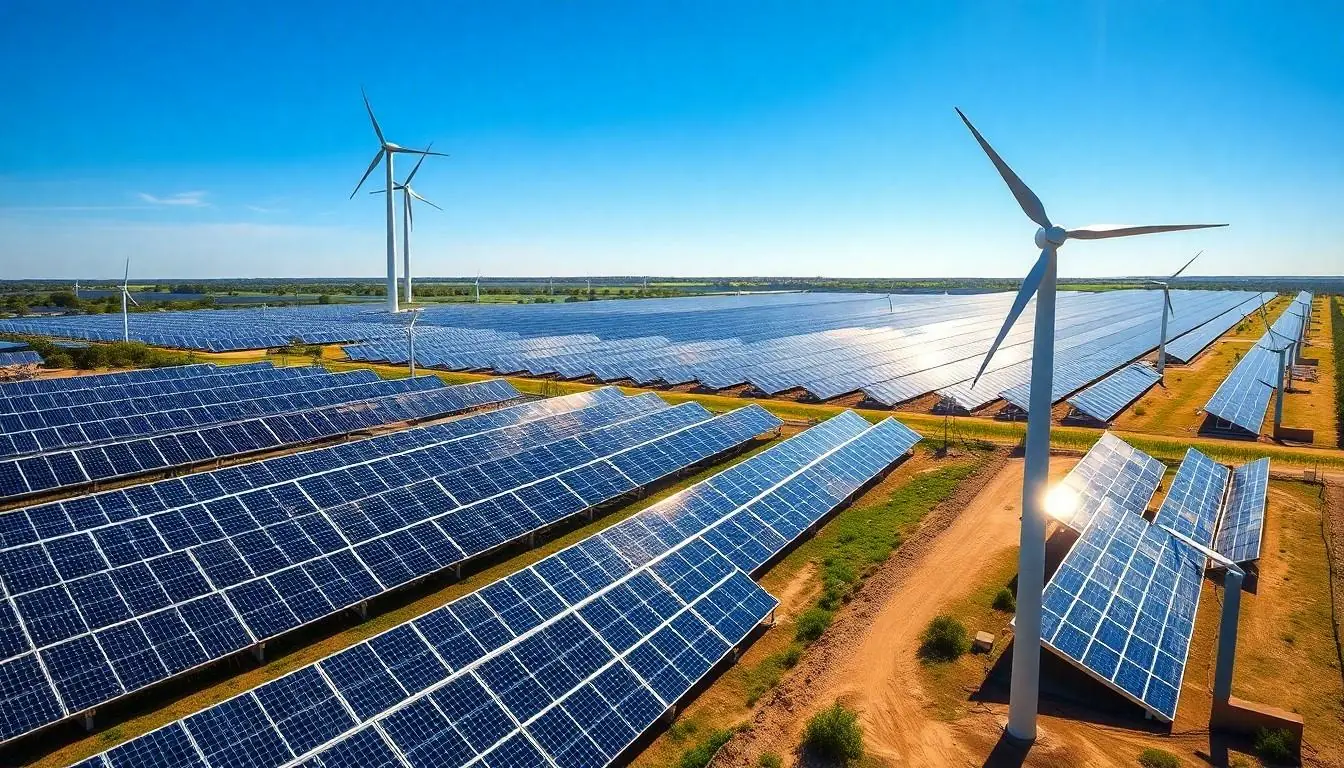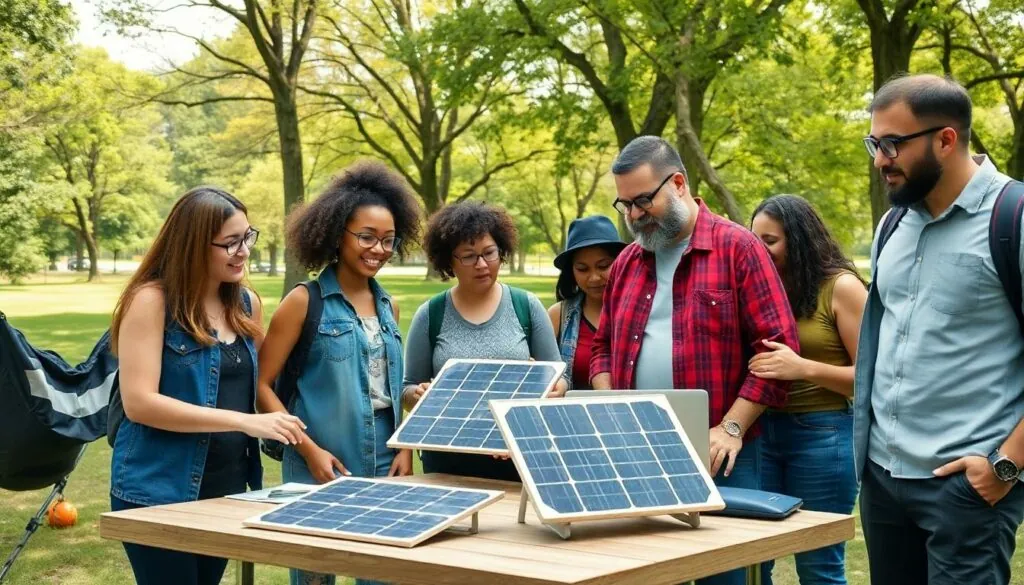Sustainable technology isn’t just a buzzword tossed around at eco-friendly coffee shops; it’s the superhero we didn’t know we needed. Imagine a world where gadgets don’t just make life easier but also help save the planet. From solar panels that sip sunshine to electric cars that zoom without a guilty conscience, sustainable technology is here to rescue us from our own energy-hungry habits.
Table of Contents
ToggleUnderstanding Sustainable Technology Meaning
Sustainable technology plays a crucial role in addressing environmental challenges. This concept involves developing and implementing innovations that minimize negative impacts on ecosystems while promoting efficiency and longevity.
Definition of Sustainable Technology
Sustainable technology refers to tools and systems designed for environmental preservation. It includes renewable energy sources, such as solar panels and wind turbines, which provide clean alternatives to fossil fuels. Innovations that reduce waste, such as biodegradable materials, also fall under this category. Efficient resource management systems, like smart grids, enhance productivity while lowering environmental footprints. This technology embraces principles of sustainability, aiming for harmony between human activities and natural ecosystems.
Importance of Sustainable Technology
Sustainable technology significantly contributes to environmental health. It reduces greenhouse gas emissions, addressing climate change effectively. Communities benefit from clean energy solutions, improving public health conditions. There is also an economic advantage, as sustainable practices can lower operational costs for businesses. Innovation in this field creates job opportunities and stimulates economic growth. Implementing these technologies ensures resource availability for future generations, securing a balanced approach to development.
Examples of Sustainable Technology

Sustainable technology encompasses various innovative solutions that help protect the environment. The following examples showcase its effective applications.
Renewable Energy Sources
Renewable energy sources include solar, wind, and hydroelectric energy. Solar panels harness sunlight to generate electricity, significantly reducing dependence on fossil fuels. Wind turbines use wind to produce power, offering a clean alternative to traditional energy methods. Hydroelectric plants convert flowing water into electricity, reinforcing the concept of sustainability by using a natural resource. According to the U.S. Energy Information Administration, renewable energy sources accounted for 20% of electricity generation in 2020, providing a substantial impact on reducing greenhouse gas emissions and minimizing the carbon footprint.
Eco-Friendly Materials
Eco-friendly materials play a crucial role in promoting sustainability. Biodegradable plastics break down naturally, diminishing waste in landfills and oceans. Recycled materials, such as paper, glass, and metals, reduce the need for raw resources and energy consumption. Bamboo serves as a sustainable alternative for various products because it grows quickly and absorbs carbon dioxide. Innovations in eco-friendly textiles, made from organic cotton or hemp, contribute to reducing environmental harm during production. The use of these materials emphasizes the move towards responsible consumption and resource management.
Benefits of Sustainable Technology
Sustainable technology offers numerous advantages that extend to environmental and economic aspects.
Environmental Impact
Sustainable technology significantly lowers greenhouse gas emissions. Innovations like renewable energy sources contribute to a healthier planet by reducing reliance on fossil fuels. With the use of biodegradable materials, waste management improves, minimizing pollution. Water-saving technologies enhance resource conservation, benefiting ecosystems. Adoption of energy-efficient appliances decreases overall energy consumption. These advancements collectively support biodiversity and promote a balanced relationship with nature.
Economic Advantages
Sustainable technology drives economic growth through job creation. Industries focused on renewable energy, like solar and wind, have seen increased employment opportunities. Lower operational costs result from energy efficiency, enhancing business profitability. Innovative sustainable practices attract consumers interested in eco-friendly products. Investing in sustainable infrastructure ensures long-term financial stability for communities. Governments often support initiatives that foster economic resilience, further incentivizing the adoption of these technologies.
Challenges in Implementing Sustainable Technology
Sustainable technology faces several challenges that hinder its adoption. These challenges stem from technical limitations and financial constraints.
Technological Barriers
Innovations often encounter technological barriers. Limited infrastructure can restrict the implementation of renewable energy systems. Existing systems may lack compatibility with newer technologies, complicating upgrades. Additionally, researchers and developers sometimes struggle to create reliable and efficient solutions. The availability of skilled personnel is another concern, as expertise in sustainable technology remains scarce in many regions. Compatibility issues with legacy systems can further obstruct progress. As a result, organizations may hesitate to invest in new technology when they face these obstacles.
Financial Constraints
Financial constraints significantly impact the adoption of sustainable technologies. High initial costs deter many businesses from making the switch to renewable energy sources. Many companies consider short-term expenses over long-term savings, leading them to stick with conventional energy options. Government incentives and financing alternatives may be insufficient to bridge this gap. Investors sometimes view sustainable projects as high risk and uncertain, further limiting the funding available. Economic uncertainties can also influence companies’ willingness to allocate budgets for new technologies. Consequently, financial obstacles often hinder the transition to sustainable practices.
Sustainable technology represents a pivotal shift toward a more responsible and eco-friendly future. By prioritizing innovations that minimize environmental impact while maximizing efficiency, society can address pressing ecological challenges. The adoption of renewable energy sources and eco-friendly materials not only benefits the planet but also offers economic advantages that can drive job creation and profitability.
Despite the hurdles in implementation, the push for sustainable technology is essential for ensuring resource availability for future generations. Embracing these advancements is crucial for fostering a healthier environment and promoting sustainable development. The journey toward sustainability is ongoing, and every effort counts in making a lasting impact.




